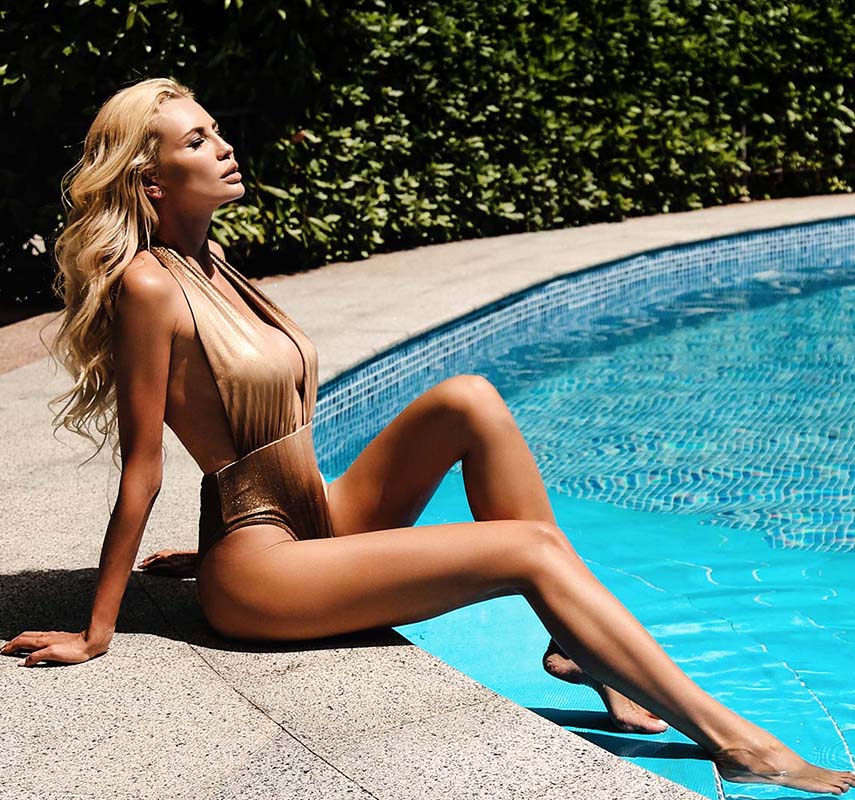
Breast Augmentation
Breasts are often seen as a symbol of a woman’s femininity. Breast augmentation can reshape the structure of the body, resulting in enhanced self-confidence and self- image for many women. Over time, the preferred aesthetic look of breast augmentation has changed from a very “plastic and done” look to that of a more natural appearance both in and out of clothes. The board-certified plastic surgeons at NOVA Plastic Surgery and Dermatology in Northern Virginia can help you achieve your desired look and choose the breast augmentation procedure that is best for you.
Schedule a Consultation
What Is Breast Augmentation Surgery?
Breast augmentation surgery refers to a procedure using breast implants (silicone or saline) to increase the size of your breasts, restore breast volume lost due to pregnancy or weight loss, or even out asymmetry of the breasts.
Breast augmentation can improve the appearance of your breasts dramatically resulting in boosted self-esteem and enhanced body image.
Once you have decided that breast augmentation may be right for you, the next step would be a consultation with a plastic surgeon to learn more about the many options available to achieving your ideal breast appearance. For more information on choosing the right plastic surgeon, click here.
Schedule a Consultation
Who Is a Good Candidate for Breast Augmentation?
- You feel your breast size is too small.
- Your breasts have lost firmness or volume due to weight loss, pregnancy, or breastfeeding.
- Your breasts are of different sizes.
- The size of your breasts is not proportionate with the rest of your body.
- You are at least 18 years of age for saline breast implants or 21 years of age for silicone breast implants, in good health, and are dissatisfied with your breasts.
Before & After


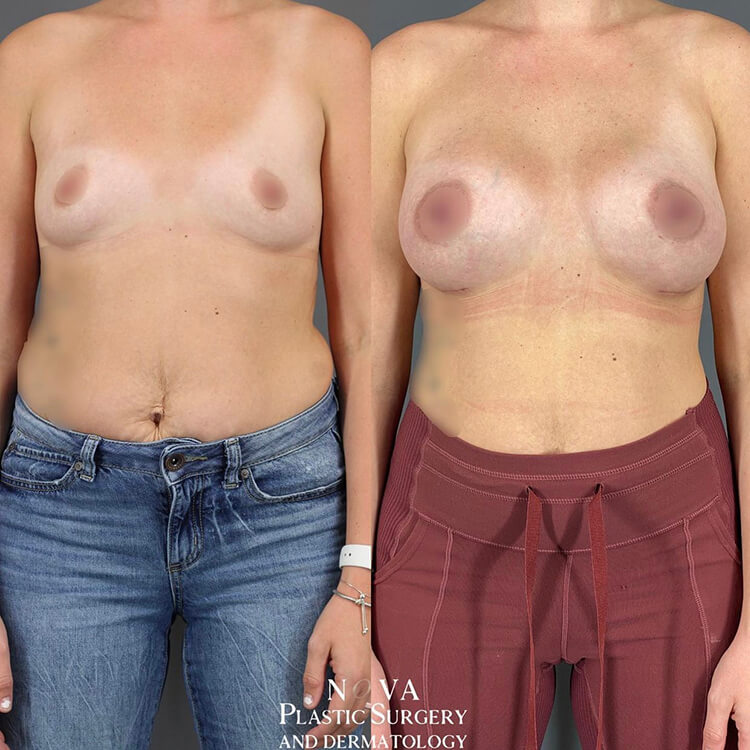
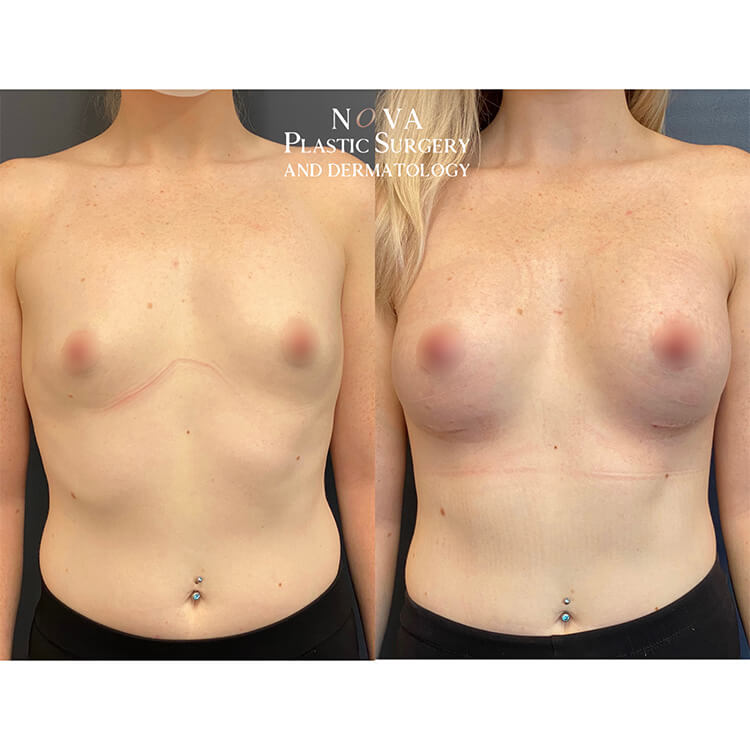
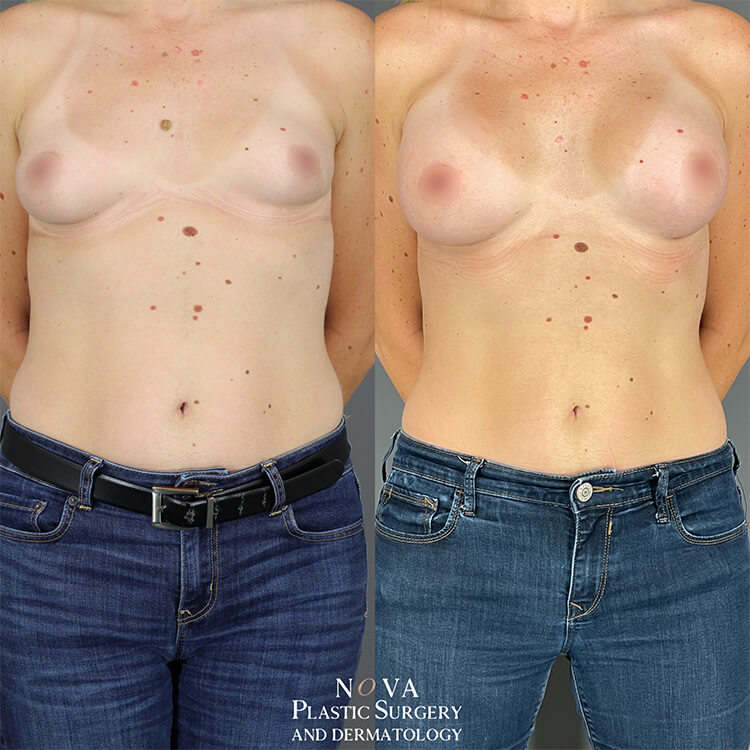
What to Expect During a Breast Augmentation Consultation?
Saline or Silicone: What Implant Is Best?
Both silicone and saline breast implants have a silicone shell that encases the preferred solution. There are pros and cons to each type of implant. Both saline and silicone can be placed either under or over the pectoralis (chest) muscle and can be inserted through multiple incision locations.
Saline implants can be inserted through a smaller incision as they are not filled with saline until they are inserted and positioned into the right location. The plastic surgeon can also choose the exact amount of saline needed to meet your specific aesthetic goals. Saline implants generally cost less than silicone implants. They produce a more rounded appearance, often feel harder and can cause more rippling after insertion.
Silicone implants can give a more natural look and feel. The size of a silicone implant needs to be decided prior to insertion as they are pre-filled and need to go through the incision site. This results in a slightly larger incision than saline implants.
Find Your Cup Size: How Do I Pick the Right Implant Size For Me?
Selecting the size of the breast implant tends to be the most difficult decision for patients undergoing breast augmentation. Our board certified plastic surgeons at NOVA Plastic Surgery and Dermatology will guide you through the process and educate you on all the options so you can make the right choice to achieve your aesthetic goals from the procedure.
During your consultation, we will use our state of the art sizing system. This sizing system uses sizers that fit snugly over your breasts in a bra allowing you to see what your size, upper chest/cleavage and profile will be after breast augmentation. Our sizing system comes in 18 different sizes so you can be sure you will find the perfect implant size for you. You will be able to see what your shape will be in and out of clothes with the sizers.
There are some limiting factors when deciding how big to go with your implants. Your current breast size will be of significant impact. You must have enough breast tissue to cover the new implant. If you lack enough breast tissue, some larger sized implants just won’t fit. Your natural build, including chest and shoulder width, will play a part in deciding which size implant will work best with your frame. Implants come in various base widths so you can choose the size that will compliment your body structure. Your lifestyle also must be taken into consideration. It is possible to find a breast implant that will enhance your shape without limiting your ability to exercise comfortably. It is important to discuss your activity level with your surgeon so they can help you choose the correct size for your lifestyle.
Implant Placement: Over or Under The Muscle?
Over The Muscle
The sub-glandular technique, over the muscle placement, involves placing the desired breast implant between the breast tissue and chest muscle.
PROS
- Less invasive surgical procedure
- Shorter recovery time and less postoperative discomfort as the muscle is not disrupted
- Implants can be placed closer together creating a look of more cleavage
CONS
- Results in a less natural look; more rounded and augmented. Some women prefer this appearance, it is up to personal preference.
- The implant is only covered by the tissue of the skin which can result in rippling, stretch marks and discoloration.
- Can cause more distortion of images on and diagnostic mammograms.
- Higher rate of capsular contracture
Under The Muscle
The sub-muscular technique, under the muscle placement, involves placing the selected breast implant partially under the pectoralis muscle of the chest.
PROS
- Creates a more natural look as the breast implant is covered by both the tissue of the skin and chest muscle.
- Less risk of visible tissue rippling
- Less distortion of images on mammograms
CONS
- Longer recovery period
- The implant might move when flexing the pectoralis muscle “implant animation”
Incision Location: Where To Cut?
Breast implants can be placed through two incision locations:
- Periareolar approach
- Inframammary (breast fold) approach
So with all of these options, which breast augmentation incision approach is best for me? This decision will depend on the aesthetics you wish to achieve. Some women prefer the periareolar or breast fold approach because the scars will be hidden with clothing. During your consultation, we will evaluate which approach will be best for your individual health and aesthetic desires.
How Much Does a Breast Augmentation Cost?
The cost of breast augmentation varies according to the type of implant, whether other procedures like a breast lift are being done at the same time, and other individual factors.
It’s important to remember that breast augmentation is an investment in your body and in your self-confidence. Investments that are worth having usually have a significant cost — but they’re well worth it in the long term. The total price for breast augmentation includes three different fees: The surgeon’s fee, the anesthesia fee, and the facility fee. During a consultation, pricing can be discussed so that you know what to expect.

Breast Augmentation Financing
Care Credit offers financing plans with reasonable monthly payments. There are several payment options, including 6, 12, 18 repayments. With these repayment plans, there is no interest if the amount is paid in full before the term is up. The other Care Credit option is 24, 36, 48, and 60 months repayment plans with a reduced interest rate if you pay in full by the end of the term. Care Credit can be an affordable and accessible way to get your breast augmentation, even if you don’t have the cash on hand right now.
What is Recovery From Breast Augmentation Like?
Recovery from breast augmentation can vary from one woman to another. The implant placement technique plays a role in recovery, with the sub-glandular technique (over the muscle) requiring less recovery time than submuscular (under the muscle.) Other factors individual to the patient can play a role in recovery time, as well. These factors can include personal pain tolerance, age, co-existing physical conditions, and other aspects specific to the patient.
During the surgery, patients are pain-free thanks to the anesthesia. We ensure that patients are comfortable before they leave the facility, and pain medication is prescribed for use on an as-needed basis at home. Most patients only need pain medication for a few days and are then able to comfortably transition to over the counter pain relievers.
Symptoms such as swelling, bruising, nausea, mild bleeding, and constipation are all normal. These symptoms typically abate after just a few days, although swelling and bruising may linger for longer. There are several symptoms that aren’t normal and may indicate a problem. These potentially dangerous symptoms include severe bleeding that completely saturates the bandages, severe swelling, breathing problems, chest pain, and severe headaches. These symptoms are very unusual, but you should be aware of them as a precaution. Call NOVA Plastic Surgery immediately if these symptoms occur.
